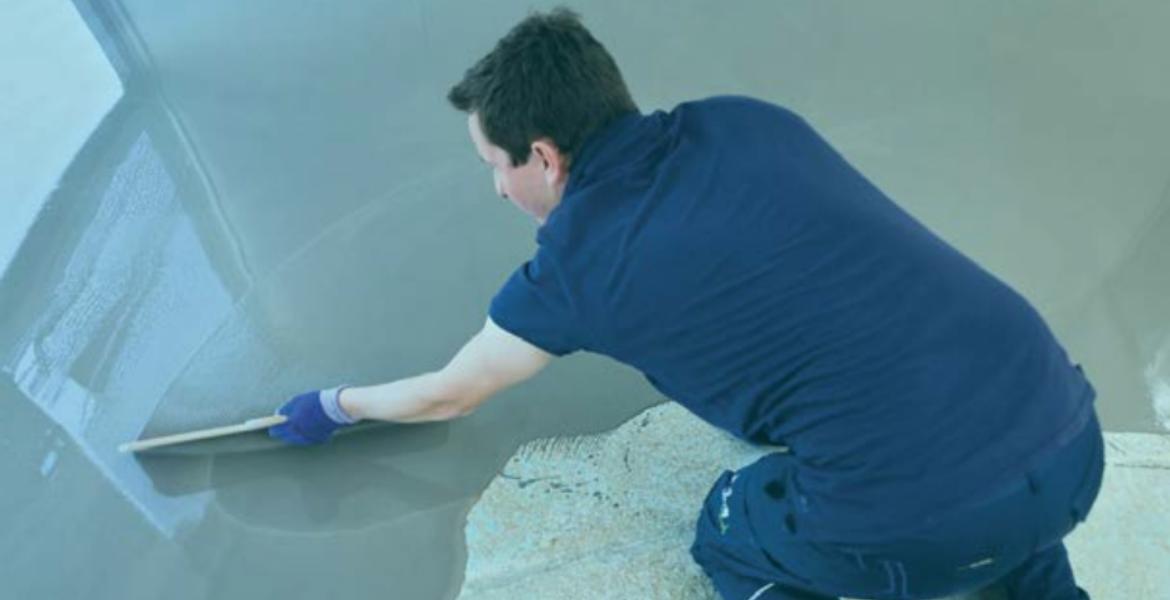
It can be generally accepted that where the provision of a smooth surface may be achieved by the use of a smoothing underlayment, then the flooring contractor will, in most cases, have available sufficient expertise to deliver satisfactory preparation. Where unsatisfactory levels exist that are localised or are more general, which need to be corrected by a thicker application of screed, this work will in most cases require the expertise of a screeding contractor. There are some exceptions to this rule where underlayments are available at thicker sections generally up to 30 mm but may need bulking out with a fine or coarse aggregate to achieve the thicker sections.
There are also proprietary deep base materials suitable for application for up to 50 mm in thickness that can provide a combined levelling and smoothing performance. These generally have the advantage of being quick drying and provide good structural hardness and are available from some manufacturers of floor smoothing underlayments.
NOTE: Depending on chosen floor finish, these thicker deep-base materials after application and hardening can take longer to dry and in some cases, may also require an additional application of a thin section smoothing compound if there is a presence of larger aggregate within them that may not give the desired smoothness for adhering thin resilient floor coverings.
It is preferable that a good standard of trowelled finish is attained, and a smooth and flat surface is achieved during application. This can also be aided by the use of a spiked roller to aerate the compound. Trowelling is not the only application technique available.
Some underlayments can be pumped, especially in large areas, or applied using gauging and smoothing blades and rakes which can control application thickness and eliminate trowel marks. Where this is not the case, it may be necessary to remove imperfections from the applied underlayment before the installation of the floor covering. This should be done using suitable mechanised preparation equipment to remove trowel line ridges or other irregularities left on the surface of the subfloor, and/or repaired using suitable repair mortars.
It can’t be assumed that self-smoothing underlayments will not require this treatment but some water-based products with high flow rates and extended wet-edge times can alleviate this problem.
It is important to note that some underlayments provide a very hard dense surface and stoning down by hand may be difficult unless carried out before the underlayment has fully hardened.
Smoothing underlayments do not offer any damp proofing properties whatsoever and cannot restrict the passage of moisture from below. There are moisture tolerant underlayments available that can be applied to a prepared subfloor that contain high levels of residual construction or ground bearing moisture.
Where there is residual construction moisture or ground bearing moisture vapour where a surface applied DPM is required, pre-smoothing is considered good practice to maximise coverage of the DPM.
NOTE: Some calcium sulphate, anhydrite and cementitious-based flowing screeds may require alternate preparation techniques to remove laitance and control residual construction moisture. Consult the screed manufacturer or section 4 of the CFA Guide to Contract Flooring for further advice.
It should be appreciated that assessment of a particular subfloor condition, and any decision on the necessary procedure to be undertaken in providing a satisfactory standard of finish for the application of the floor covering, may require the opinion of the flooring manufacturer and underlayment manufacturer but ultimately remains the responsibility of the flooring contractor. If any uncertainty exists on the suitability of the base over which an underlayment is to be applied, this must be resolved by the flooring contractor before application is carried out.
Further information on underlayments is available in the CFA Guide to Contract Flooring.